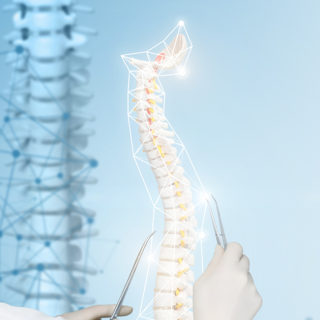Isaac Darrel, a patient of Unique Medical Access, had a diving accident that left him with a C7 Spinal Cord Injury. He would often pass out whilst in his wheelchair, but after undergoing Epidural Stimulation treatment in 2016 he is able to sit for eight hours or exercise without feeling light-headed.
“My blood pressure would tank right down into the 60s,” said Darrel to Neuro Science News. The article talked about Darrel’s experience with Epidural Stimulation, a treatment where electrodes get surgically implanted over the spinal cord. A case study about his experiences was published in JAMA Neurology.
Epidural Stimulation is a treatment where the spinal cord is implanted with a device that enable electrical currents to be sent through the spinal cord. The electrodes are surgically implanted and placed over the spinal cord’s protective coating. The patient has a remote which controls the stimulator to transmit electrical waves into the spinal cord, lasting from thirty to forty minutes each day. In Darrel’s case, there are different programs that can be selected to directly stimulate nerves that help with motor functions, transmitting electrical impulses into the spinal cord.
Paralysis and Mobility Issues in Patients with Spinal Cord Injury
Side effects of spinal cord injury include dizziness, fluctuations in blood pressure, changes in bladder and bowel function, and sexual dysfunction. However, the biggest concern for patients with spinal cord injury are paralysis and mobility issues.
“Mobility issues or paralysis are the most visible consequences of a spinal cord injury but as a clinician, I know that many of my patients suffer from other ‘invisible’ consequences,” said Dr. Andrei Krassioukov to Neuro Science News. Dr. Krassioukov, a principal investigator of the JAMA Neurology study, worked with Darrel for a number of years. He is a professor of medicine at the University of British Columbia and a chair in rehabilitation research with ICORD, a Vancouver research centre focused on spinal cord injuries.
Recovery for Patients
Darrel’s symptom of low blood pressure is what doctors call Orthostatic hypotension which results from poor cardiovascular function.
“I would pass out or black out sitting in my chair sometimes. Now, since I have the implant, I’m able to turn up the stimulation enough that it makes it impossible for me to black out, ” Darrel said to Neuro Science News.
After Epidural Stimulation treatment, he said his overall condition improved with better blood pressure, core muscle, and improved bowel function.
Researchers at ICORD followed Darrel and ran tests to see if the treatment works. To test whether patients improve, they are placed in a upright position to see if they can maintain blood pressure. Dr. Krassioukov said that a good indicator of recovery is having no drop in arterial blood pressure and the patient is able to control their blood vessels in their lower extremities and the abdomen.
Epidural Stimulation for Spinal Cord Injury
Although many people regard Spinal Cord injury to be irreversible and untreatable, the Epidural Stimulation implant has already helped a number of patients regain their strength and movements in areas considered permanently damaged by the injury.













